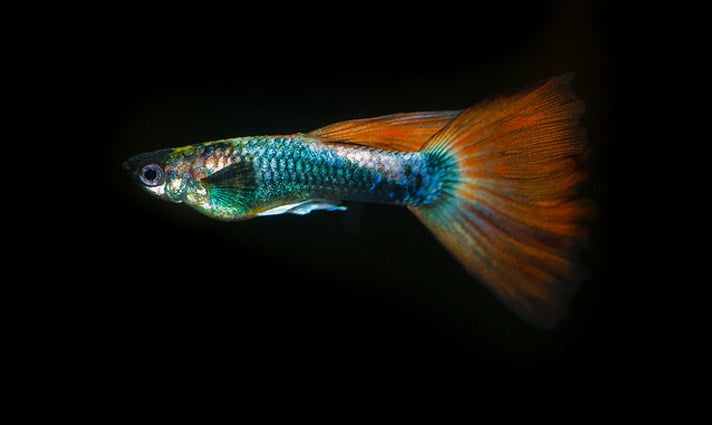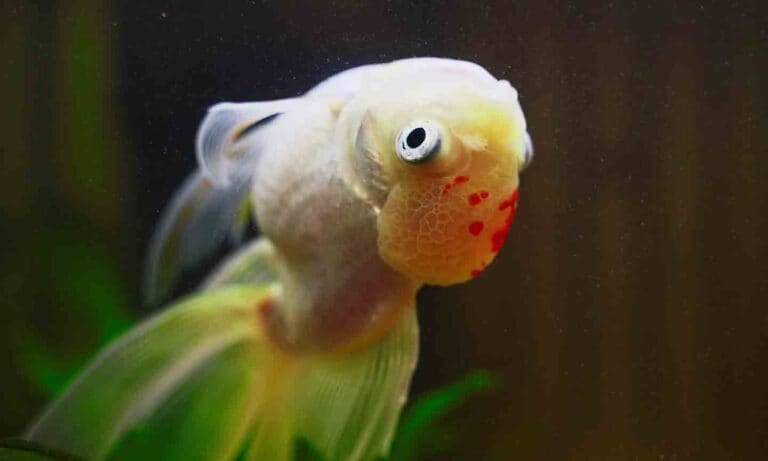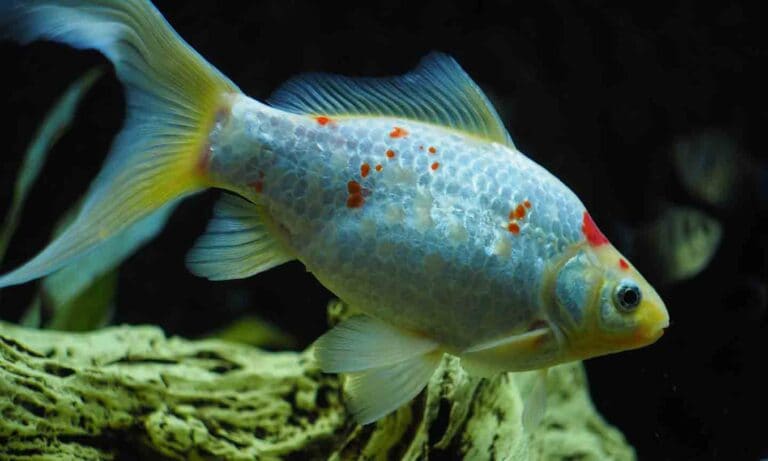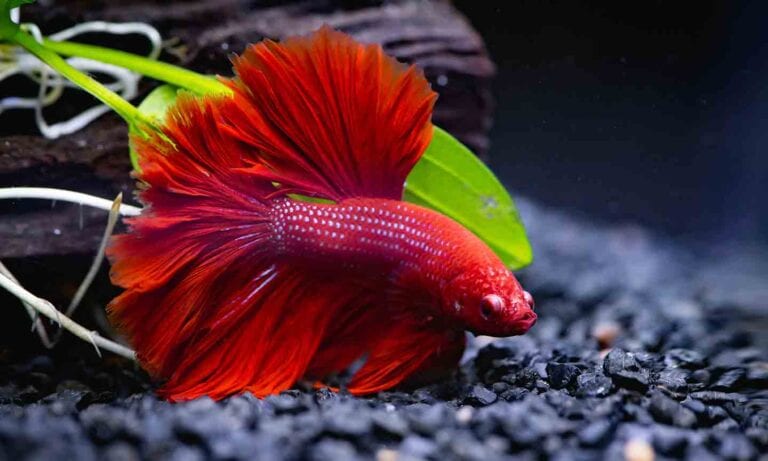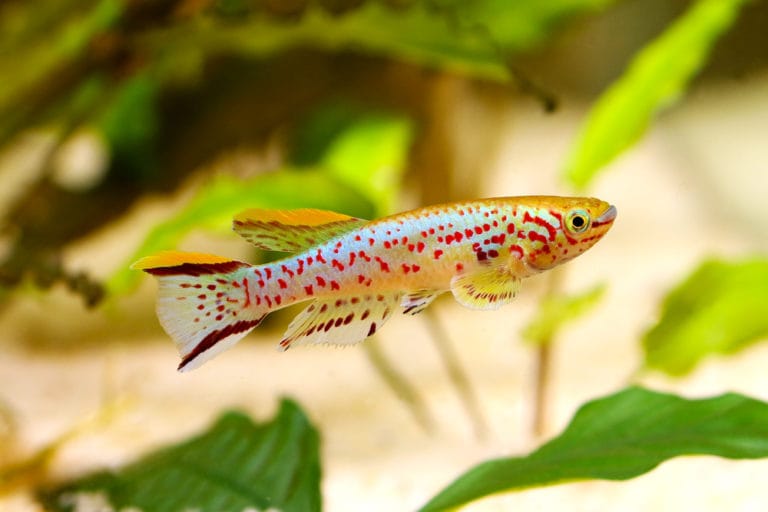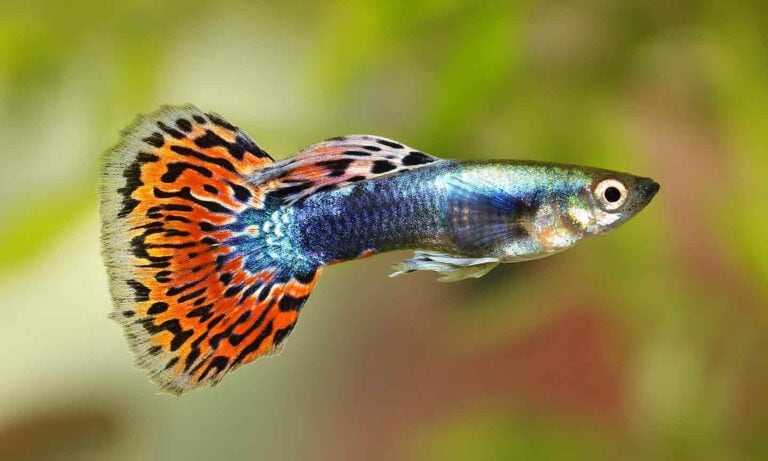As its name suggests, guppy disease is a major problem for those keeping guppies, but other types of fish can be affected too.
Identification
Guppy disease resembles ich, aka whitespot disease, (Ichthyophthirius multifiliis) in many ways, and positive identification is impossible without microscopic analysis. Affected fish are usually (but not always) covered with white spot-like cysts on their flanks and fins, and also exhibit such symptoms as heavy breathing, lethargy and clamped fins.
Swellings may develop in the muscles of the fish. Grey patches of mucous may be apparent, particularly on dark-colored fish such as black mollies. Note that despite the name, guppy disease can affect a variety of fish including cichlids, catfish and tetras. But with that said, guppies and their close relatives such as mollies and Limia spp. do seem particularly sensitive to the parasite. Compared to ich, guppy disease causes death much more quickly. In some cases an infected guppy can appear healthy one day and be dead the next. Besides the limited time available for diagnosis, medications that work against ich or velvet tend to work poorly, if at all, against guppy disease.
Pathology
The pathogens that causes guppy disease are ciliate protozoans in the genus Tetrahymena including Tetrahymena corlissi and Tetrahymena pyriformis. Interestingly, Tetrahymena are not obligate parasites, and likely exist in most aquaria without causing harm. They may even be commensals, roving across the surfaces of fish consuming whatever organic matter they find. Only under certain circumstances do they invade the tissues of their hosts and cause harm, typically via lesions and very likely in situations where poor diet, stress, and/or poor environmental conditions have weakened the fish’s immune system.
Life Cycle
Tetrahymena have a life cycle similar to those of other ciliates, alternating between stages that multiply vegetatively through cell division and sexually through conjugation and exchange of genetic material between cells. Unlike the ich parasite though, Tetrahymena don’t need a host to complete their life cycle. As a result they can live for years in a fish aquarium without causing disease, only to suddenly become problematic should conditions in the aquarium deteriorate or the fish being maintained become stressed or damaged.
Treatment
Unfortunately, there are no easy, reliable treatments for guppy disease. Under laboratory conditions niclosamide, albendazole and chloraquine have all been found to provide some degree of relief, but these have not been turned into medicines that aquarists can use. Some success has been had using multipurpose anti-protozoan medications such as Clout, but several treatments may need to be performed alongside significant improvements in diet and environmental conditions.
Salt
Those Tetrahymena species that affect freshwater fish are more tolerant of salinity than ich parasites, so the slight salinity used to treat ich won’t work against guppy disease.
Prevention
Guppy disease is best managed through prevention. This will be a three-fold process starting with careful selection of new livestock. Among commonly traded aquarium fish guppies are particularly affected by Tetrahymena infections and it is absolutely crucial that the aquarist selects healthy livestock from aquariums with no sickly fish. Bear in mind that the parasites can be carried by other fish even if they don’t become sick from them, so buying some Corydoras catfish from an aquarium that contains sick guppies is just as likely to introduce the disease to your aquarium as buying the guppies themselves. Check that your retailer is doing all the usual things to prevent infections spreading among fish and between aquariums, such as removing sick fish promptly and using disinfectant to clean fish nets between uses.
The second step required to limit problems with guppy disease is to quarantine and observe all new livestock. This is good practice anyway, and holding new fish in a quarantine aquarium for 4 to 6 weeks before moving them to the main aquarium should make it easier to detect and treat all sorts of diseases, not just Tetrahymena infections. Finally, fish need to be maintained under healthy conditions. In the case of guppies this includes providing them with a spacious fish aquarium (at least 15 US gallons) and good water quality (i.e., zero ammonia and nitrite). Water chemistry must be hard and alkaline; aim for at least 10 degrees dH, pH 7.5 to 8.5. Brackish water conditions aren’t essential but they do seem to help with guppies, Limia and especially mollies. Male guppies are notoriously aggressive, and any physical damage they cause can trigger guppy disease infections. Maintain groups of at least two females per male, and use floating plants such as Indian fern to create hiding places at the surface of the fish aquarium. Needless to say, any other fish that damage guppies through aggression or fin-nipping are just as likely to create lesions through which Tetrahymena infections can get started.
Posted by: Chewy Editorial
Featured Image: Via William Warby/Flickr
Share:
